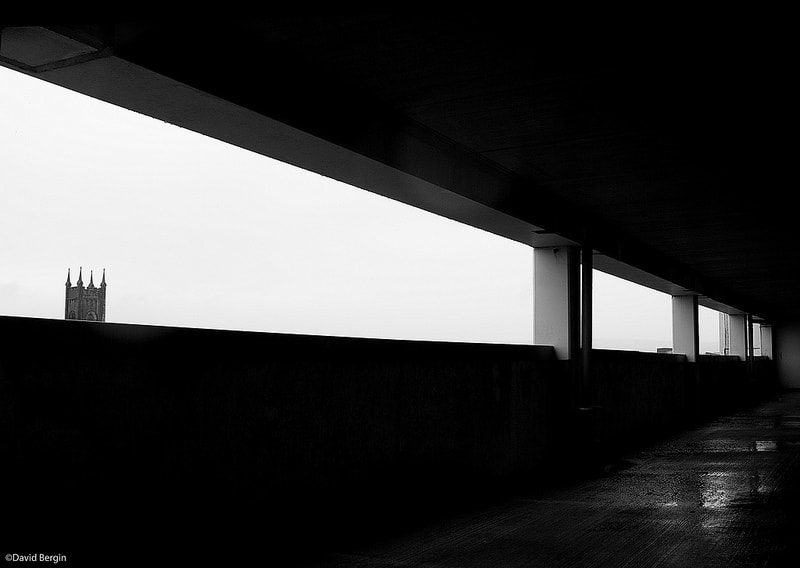There are a number of great tricks to improve the composition of your photography, and one of the most underutilized of these is drawing a viewer's attention to specific points in an image using what are known as leading lines.
Leading lines are natural lines in the image that lead the viewer's eye to another point in the image or, occasionally, out of the frame entirely. Anything with a definitive line can be a leading line including fences, bridges, and shorelines, and their placement within images naturally guide viewer's attention down their paths in the frame.
Leading lines are natural lines in the image that lead the viewer's eye to another point in the image or, occasionally, out of the frame entirely. Anything with a definitive line can be a leading line including fences, bridges, and shorelines, and their placement within images naturally guide viewer's attention down their paths in the frame.
It's important to understand how to properly utilize leading lines, though, as they can sometimes lead the viewer's focus out of the frame for no reason or away from core elements.
How to Properly Use Leading Lines
Because lines in photography naturally draw a viewer's attention along the paths they create within the image, it's important to frame your shot in such a way that the lines draw attention to the parts of the image you want them to notice.
If you're out in the field taking photos and realize that a road or fence line in the image keeps drawing attention away from the subject of your picture, consider moving or repositioning the angle of your shot until the natural line provides more of an accent to the overall focus of the image. For instance, if a road is leading out of the frame to the right but you want your audience to notice the monument on the left, consider moving to the other side of the road where it leads into the frame toward the monument instead.
Creating Depth With Leading Lines
Using leading lines correctly can yield dynamic images with a lot of attention-grabbing details to lead a viewer through the moment in time captured in photographs. Most often, leading lines that start in the foreground and move off to the background, getting narrower as they get further away, create the most dynamic effects in an overall image.
Leading lines happen everywhere in nature, so be sure to always be on the lookout for lines that might unintentionally distract the viewer from the central focus of your image. Tall grass, sun rays, cliffs, door frames and window panes, houses, roads, rivers, bricks, trees, and all sorts of other objects can act as leading lines once photographed, so be aware of how these objects might create depth but also attract the viewer's eye to an undesired point in the photo.
How to Properly Use Leading Lines
Because lines in photography naturally draw a viewer's attention along the paths they create within the image, it's important to frame your shot in such a way that the lines draw attention to the parts of the image you want them to notice.
If you're out in the field taking photos and realize that a road or fence line in the image keeps drawing attention away from the subject of your picture, consider moving or repositioning the angle of your shot until the natural line provides more of an accent to the overall focus of the image. For instance, if a road is leading out of the frame to the right but you want your audience to notice the monument on the left, consider moving to the other side of the road where it leads into the frame toward the monument instead.
Creating Depth With Leading Lines
Using leading lines correctly can yield dynamic images with a lot of attention-grabbing details to lead a viewer through the moment in time captured in photographs. Most often, leading lines that start in the foreground and move off to the background, getting narrower as they get further away, create the most dynamic effects in an overall image.
Leading lines happen everywhere in nature, so be sure to always be on the lookout for lines that might unintentionally distract the viewer from the central focus of your image. Tall grass, sun rays, cliffs, door frames and window panes, houses, roads, rivers, bricks, trees, and all sorts of other objects can act as leading lines once photographed, so be aware of how these objects might create depth but also attract the viewer's eye to an undesired point in the photo.
|
|
LINE: SHAPE: TEXTURE: PATTERN:
Identifying key lines in your photographs are important. But sometimes lines become more than just lines. Lines that connect become shapes. Lines that repeat can be texture. Shapes or lines that repeat become patterns |
A line is an identifiable path created by a point moving in space. It is one-dimensional and can vary in width, direction, and length. Lines often define the edges of a form. Lines can be horizontal, vertical, or diagonal, straight or curved, thick or thin. They lead your eye around the composition and can communicate information through their character and direction.
Horizontal
lines suggest a feeling of rest or repose because objects parallel to the earth are at rest. In this landscape, horizontal lines also help give a sense of space. The lines delineate sections of the landscape, which recede into space. They also imply continuation of the landscape beyond the picture plane to the left and right.
Vertical lines often communicate a sense of height because they are perpendicular to the earth, extending upwards toward the sky. In this church interior, vertical lines suggest spirituality, rising beyond human reach toward the heavens.
Horizontal and vertical lines used in combination communicate stability and solidity. Rectilinear forms with 90-degree angles are structurally stable. This stability suggests permanence and reliability.
Horizontal
lines suggest a feeling of rest or repose because objects parallel to the earth are at rest. In this landscape, horizontal lines also help give a sense of space. The lines delineate sections of the landscape, which recede into space. They also imply continuation of the landscape beyond the picture plane to the left and right.
Vertical lines often communicate a sense of height because they are perpendicular to the earth, extending upwards toward the sky. In this church interior, vertical lines suggest spirituality, rising beyond human reach toward the heavens.
Horizontal and vertical lines used in combination communicate stability and solidity. Rectilinear forms with 90-degree angles are structurally stable. This stability suggests permanence and reliability.



